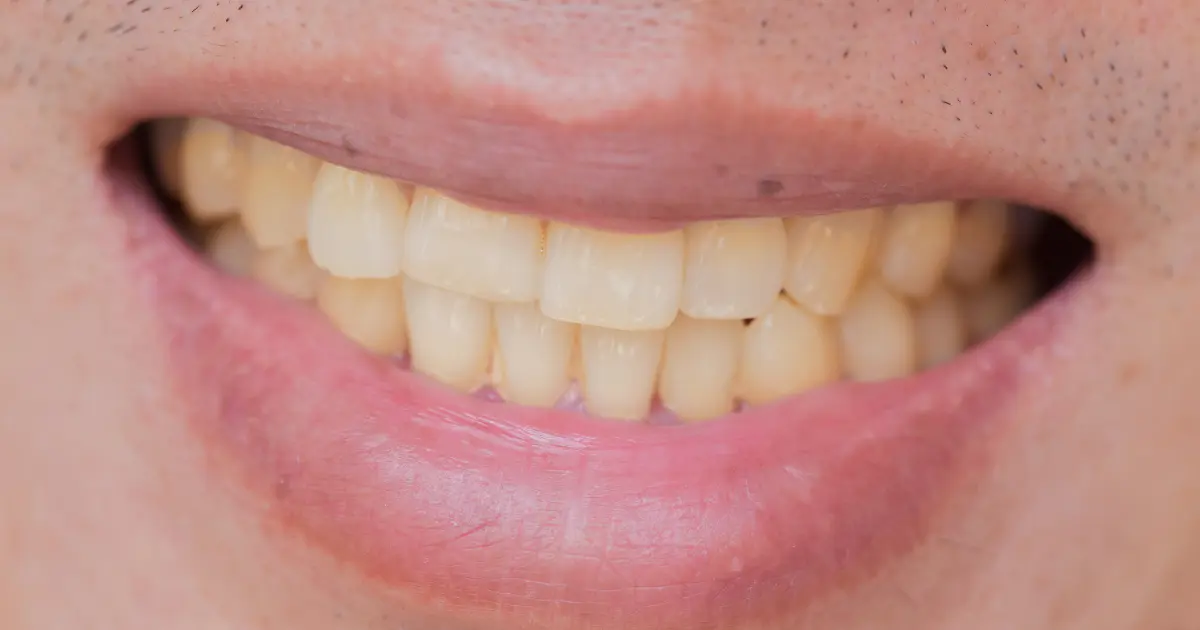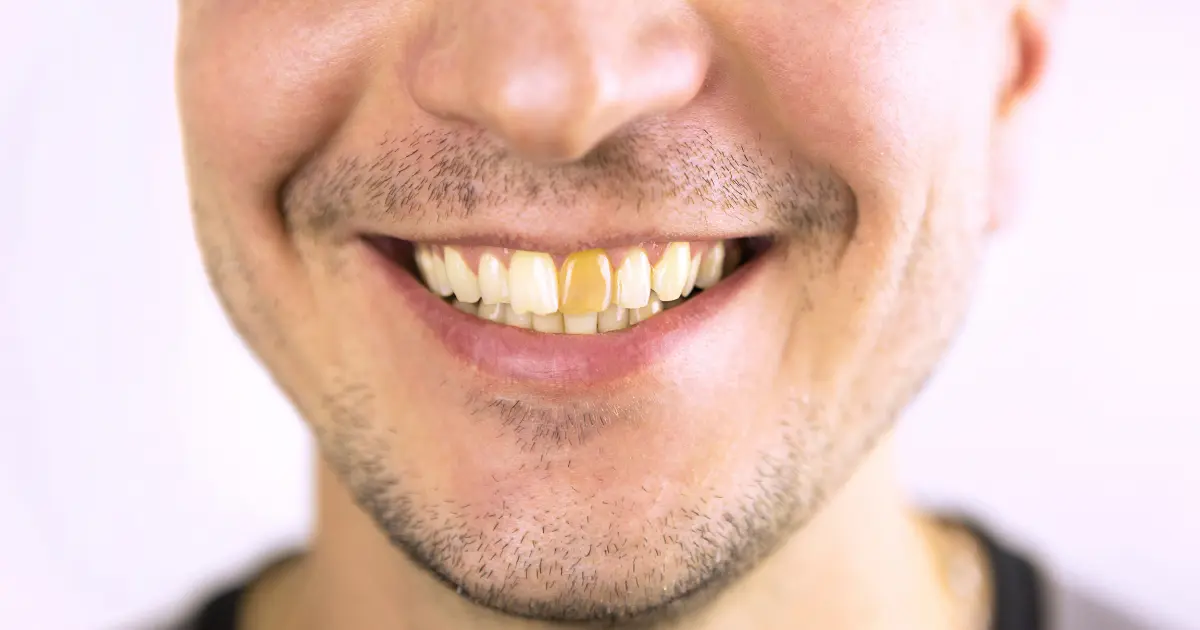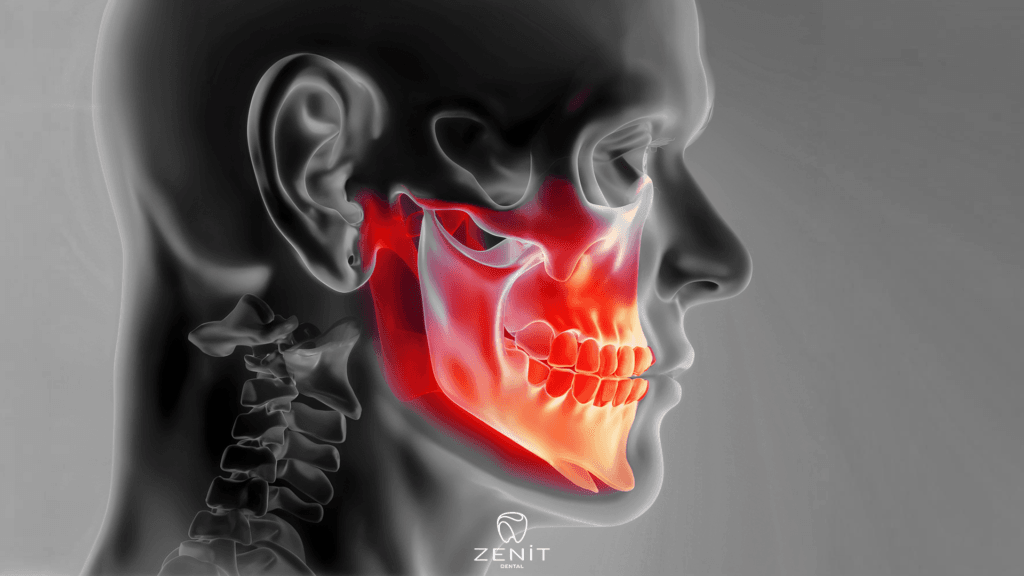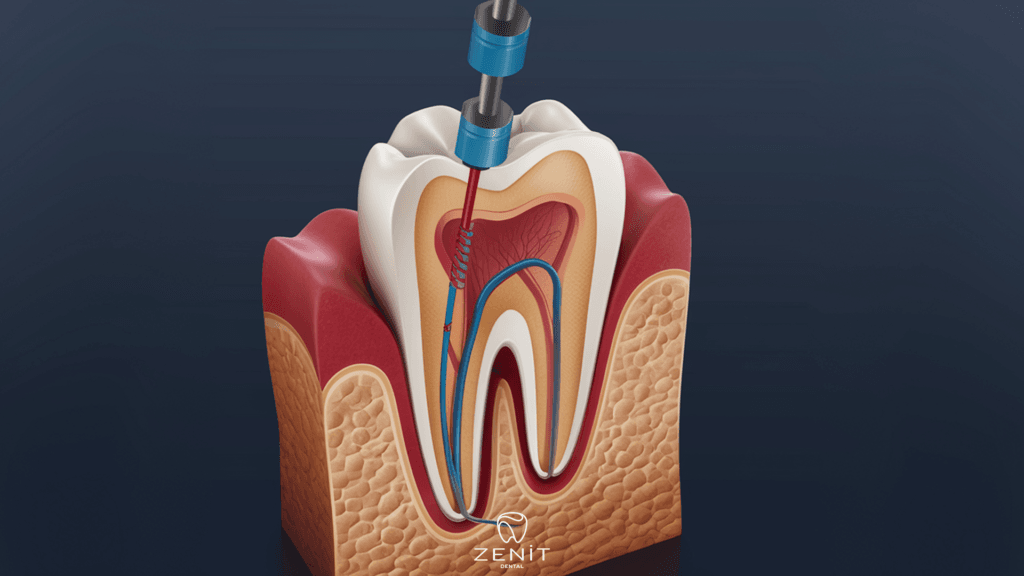Tooth discoloration is the alteration of tooth color. They are not as brilliant or white as they should be. Your teeth may get discolored, change from white to other hues, or acquire white or black patches. Coffee, tea, colas, wines, as well as specific fruits and vegetables (such as apples and potatoes) can stain your teeth. Insufficient brushing, flossing, and rinsing to eliminate plaque and discoloration-causing compounds.
Possible causes of tooth discoloration include:
- Extrinsic, meaning it is created by something in touch with your teeth
- Intrinsic, or caused by something inside the teeth or body
- Aging
What Is Tooth Discoloration?

Tooth discoloration and stains are regular occurrences that can be caused by several factors. Many of these stains may be treated and avoided.
With extrinsic discoloration, the stains are likely just harming the tooth enamel, or the tooth’s surface. Intrinsic stains reside within the tooth, making them more resistant to over-the-counter whitening solutions. It frequently appears gray.
What Are the Different Types of Tooth Discoloration?

There are two primary forms of discoloration: intrinsic and extrinsic. Intrinsic discoloration originates from the tooth’s interior or enamel. Extrinsic discoloration stems from external causes. Whitening is often more successful on extrinsic discoloration.
Numerous internal tooth alterations can result in intrinsic tooth discoloration. A tooth’s intrinsic discoloration may be the consequence of chemical or physical changes. As we age, our dental enamel deteriorates, and as it thins, the dentin, the tooth’s inner structure, becomes more exposed. Dentin can be yellow, brown, or gray, depending on the individual, and can give the teeth a yellow, brown, or gray hue.
Tooth damage can also result in discolored teeth. If a tooth’s pulp dies, the tooth may turn dark or even black. A tooth may potentially experience damage before erupting, resulting in inadequate enamel development and a discolored area. Additionally, tooth decay can discolor teeth.
Certain pharmaceuticals and chemicals, like as tetracycline and excessive fluoride usage during youth, can cause enamel abnormalities that manifest as discoloration.
The most effective therapy for intrinsic tooth discoloration is porcelain veneers or another procedure that conceals the stained tooth enamel. Extrinsic tooth darkening is the most prevalent kind of tooth discoloration. Although the majority are, not all foods that discolor teeth are black in color. Even though they are light in color, apples and potatoes can cause discoloration.
How Is Tooth Discoloration Treated?

Depending on the source of the discoloration, treatment methods for whitening teeth might vary. They may make your teeth sensitive, although this negative effect often disappears as the bleaching process is complete.
If you have your teeth whitened in the dentist’s office, it may require many visits. After protecting your gums with a gel or rubber shield, they will apply a bleaching substance to your teeth. Additionally, they can create a personalized tray for you to use at home with whitening gel.
A dentist or prosthodontist bonds material to discolored portions of your teeth in order to alter their color or form. To modify the color or contour of a tooth, a dentist or prosthodontist places a thin shell of material over the whole front surface of the tooth.
As the term implies, it is the procedure of enhancing the color of one’s teeth. There are several causes of discolored or stained teeth. Dietary habits are the most prevalent cause; your teeth will get discolored if you consume excessive amounts of coffee, sugary beverages, red wine, or tea, or if you smoke or take certain medications.
The most prevalent method of crucial teeth whitening for tooth discoloration is smile design. Some bleaching chemicals are triggered by laser light, special lights, or the heat generated by these lights. After applying the whitening solution, the dentist will shine the light on the patient’s teeth.






